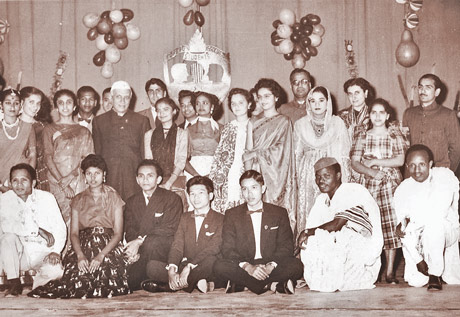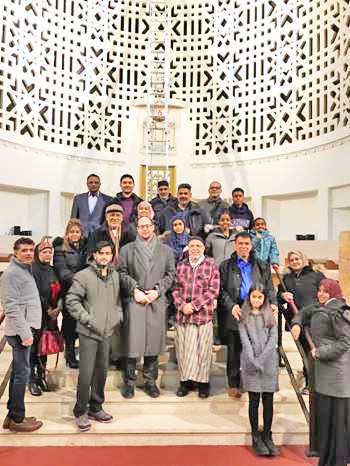| March 6, 2019 issue | |
Community Connection |
|
| Ex-University of Guyana students seek to revive the dormant Ontario Guild of Graduates |
|
 |
|
| Some of the attendees socializing at the meet-and-greet event held on March 3, 2019. | |
By Alexander Ramessar, HBSc, MEnSci, BEng. – President of UG Alumni Association, Toronto Chapter – The University of Guyana (UG) has produced over 30,000 graduates since its inception more than fifty five years ago, many of whom are trail blazers right here in Canada. Building on the leadership of former President Harry Hergash and the dedicated members of the now dormant UG Guild of Graduates of Ontario, the UG Alumni Association, Toronto Chapter is seeking to embrace its many alumni in Ontario once again. To that end, the Toronto Chapter organized and hosted its second successful meet-and-greet at the Tropical Nights Restaurant in Scarborough on March 3, 2019. A wide cross of section ex-students attended with graduates from the early 1980s through to 2000s. The atmosphere was rich with lots of laughs and fun as stories were shared about their UG and high school days. Alumni expressed the need for more opportunities to bring UG people together such as get-togethers in the parks alongside some of the many picnics happening during the summer. There were also excellent discussions on the issues facing Guyana which is inevitable with any gathering of Guyanese. The goal of the UG Toronto Chapter is to connect graduates, past faculty, staff and supporters of UG in a reciprocally beneficial relationship of investing, nurturing, fundraising, mentorship and development. The Toronto Chapter will support the developmental efforts of UG; serve as supporters to fund raising, talent acquisition, research as well as recruitment of staff and faculty; provide mechanisms and opportunities for connecting, fellowship and sharing, networking, and professional growth and to lend guidance on matters pertaining to the general welfare of UG or which may be of interest to the Administration, Academic Board and Council. Ultimately the organization seeks to improve the quality of student life at UG. Next steps for the Toronto Chapter are to formalize the organization and build up membership. Over the next two quarters, the Chapter plans to register as a non-profit organization and hold elections once there are enough committed members. The Toronto Chapter is also exploring hosting monthly Facebook Live discussions where alumni and experts can participate in intellectual debates and present evidence-based solutions to issues facing Guyana. The Toronto Chapter is also planning a fundraising dinner in November of 2019 (exact date and venue to be announced). Alumni who are interested in joining the association can contact alexramessar@gmail.com or search for our group on Facebook. More information can also be found at the University of Guyana Philanthropy, Alumni and Civic Engagement website - www.uog.edu.gy. |
|
| A descendant of Indentured immigrants recalls his student days in India in the '50s |
|
 |
|
| At the International Festival of Music and Dance, Delhi University, 1958 with guest, Pt. Jawaharlal Nehru. | |
By Vidur Dindayal |
|
| Muslim, Jewish groups meet for greater understanding |
|
 |
|
| Members of the Imdadul Islamic Centre and the Holy Blossom Temple met on February 25 at the Temple's premises in Toronto for greater understanding. |
|
By Alysha Aziz |
|
 |
|
| < In The News | |